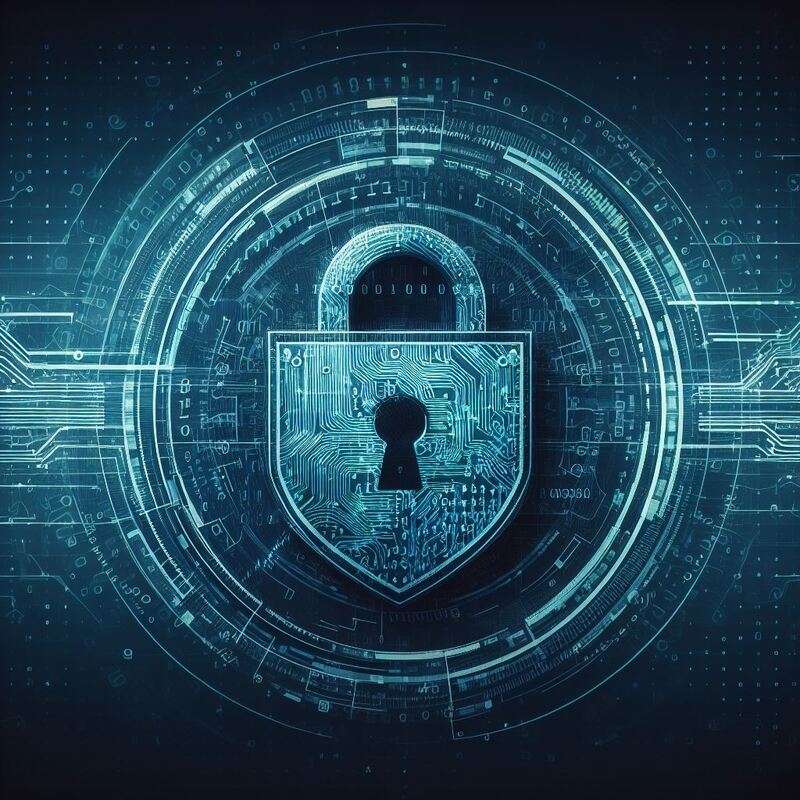Well, I’ve seen the monsters lurking in the digital alleys, and let me tell you, they aren’t pretty. I’ve had sleepless nights, haunted by tales of their online shenanigans. But fear not; it’s time to turn me into your cyber superhero who knows the secret to building an impregnable password fortress.
Being the low-hanging fruit in the orchard of the internet? Not on my watch. I will show you the art of creating a password policy so strong even Hulk wouldn’t be able to smash it. And, if that’s not enough, we’ll bring in the big guns – two-factor authentication. Trust me, it’s like having a digital Rottweiler guarding your online domain.
We’ll also change those passwords like socks because freshness is key, my friend. And while we’re at it, let’s dodge those common blunders like Neo dodges bullets in The Matrix.
Last, I will introduce you to my secret weapon – password management tools. They’re like that trusty sidekick every Superhero needs.
So, buckle up; it’s time to take our password game from zero to hero. Ready to dive into this action-packed adventure? Let’s roll!
Understanding Password Strength
Alright, folks, buckle up! I’m about to take you on a rollercoaster ride through the thrilling world of password strength. Exciting, right? Well, brace yourselves because we’re diving into the pool’s deep end – the mysterious realm of password entropy principles. These bad boys measure just how unpredictable your password is. The more entropy, the less chance some basement-dwelling hacker is going to guess your password.
But wait, there’s more! We also need to grapple with strength estimation techniques. Sounds like a fancy workout routine, doesn’t it? But no, it’s all about assessing the Hulk-like strength of your password. It’s like a beauty pageant for passwords, where the judges are considering factors like length (no short jokes, please), the use of special characters (because who doesn’t love a good exclamation mark?), numbers (because math is cool, right?), and uppercase letters (because sometimes we need to yell to make a point!).
Incorporating Two-Factor Authentication
Alrighty then, let’s play dress-up with our security and don a fabulous double-layered cloak called two-factor authentication. Sounds swanky, doesn’t it? It’s like having a secret handshake to get into the most fantastic club in town, except it’s for your precious account.
So here’s the deal: not only do you need a password (that hopefully isn’t “password123”), but also a confetti shower of a secondary confirmation that yells out, “Yes, it’s really me! No autographs, please.” One common way to do this is with mobile authentication methods. It’s like getting a love text, except it’s a unique code only you and your account share. So romantic, right?
But wait, there’s more! Let’s talk about the magic of biometric verification. This is where it gets so personal that it would make your diary blush. You can use your fingerprint or face scan for authentication. It’s like your account saying, “I love you for who you are…and also because no one can replicate that unique nostril flare of yours.” So, what you’re doing is not just relying on what you know (password) and what you have (mobile) but also on that gorgeous mug of yours (biometrics). It’s like a triple-layered security sandwich, making your account as harsh to crack as my grandma’s secret pickle recipe.
Regular Password Updates
Well, let’s dive headfirst into the thrilling world of password updates, folks! I know it’s as exciting as watching paint dry but bear with me. Updating them regularly is my secret ninja move to keep those sneaky cyber-criminals at bay. It’s like changing the locks on my virtual front door every 60-90 days. That’s right, my digital house always has new locks!
Here are my three golden rules, or let’s call them my “Top three tips to make your password as elusive as Bigfoot”:
- Frequent Changes: I update my passwords as often as I change my socks, every 60-90 days. I may change my pantyhose more often than that, but you get the point. This keeps those pesky unauthorized users guessing.
- Password Age: I avoid using old passwords like I avoid my Aunt Edna’s fruitcake. Trust me, the older they are, the higher the chances of them being compromised. And no one wants a stale password, am I right?
- Avoid Repetition: I never use the same password for multiple accounts, just like I never wear the same socks two days in a row. This limits the damage in case one of my accounts decides to have a wild night out with a hacker.
Avoiding Common Password Mistakes
Let me tell you, my friend, that hopping on the password protection train is like being a knight guarding a digital castle. Like a true trooper, I change my passwords more often than my socks- that’s saying something!
Now, this little thing called ‘password psychology’ plays a huge role here. We all have this irresistible urge to pick passwords as easy as pie. Birthdays? Pet names? Sure, they’re as memorable as when I accidentally wore mismatched shoes to work. Still, they’re also as guessable as the ending of a rom-com movie.
And let’s talk about this fancy term ‘leet speak’ – replacing letters with numbers in passwords. You might think you’re being as cunning as a cartoon fox, but trust me, even the greenest of hackers would roll on the floor laughing at this old trick.
The aftermath of a digital breach is scarier than running out of coffee on a Monday morning, with the risk of losing sensitive info or worse – imagine someone else living your life, but online! So, understanding this password psychology and the high stakes at play, it becomes crystal clear that a unique, complex password is as essential as my morning caffeine fix.
Implementing Password Management Tools
Let me tell you, folks, if you’re anything like me, keeping track of all the passwords for every single device, app, and website is like trying to remember all the names of my second cousin’s five kids. That’s where password management tools come waltzing in, like a knight in shining armor for your digital security. Oh, the benefits! They’re like a buffet of security features.
Firstly, there’s this thing called a Password Vault. Sounds impressive. It’s like the Fort Knox of passwords. It stores all your passwords in one secure place. You just need to remember one master password – it’s like the “password to rule them all.” And the best part? It’s easier than remembering all the characters in Game of Thrones.
Next up, we have the grandeur of multi-device synchronization. Whether you’re on your desktop, smartphone while in line for coffee, or tablet during that boring meeting, your passwords are always just a click away. They synchronize faster than synchronized swimmers at the Olympics!
And the cherry on top? Password management tools can automatically change your passwords regularly. It’s like having your own personal stylist but for your passwords. They’ll ensure you’re always in vogue and less at risk of being digitally mugged.
Frequently Asked Questions
What Happens if I Forget My Complex Password and Can’t Access My Account?
Oh boy, I’ve done it again, haven’t I? My brain’s gone foggy, and I can’t remember that ridiculously complex password I set up. But hey, let’s not break into a cold sweat just yet! I’ve got these handy-dandy password reset lifelines. All I need to do is use my registered email or phone number, and voila! I’ll be back in my account faster than you can say, “Forgot password?”. Now, let’s try to remember which email I used…
How Can I Recover My Account if I Lose My Two-Factor Authentication Device?
Whoopsie-daisy! Lost your two-factor authentication device, have you? Well, let’s not go into panic mode just yet. These techy platforms are more intelligent than a fox in a henhouse. They’ve got recovery methods lined up just for such pickles. So, usually, I’d whip out my device backup codes to regain access. Still, trying to figure out where to start? Move on to the platform’s help center, and they’ll guide you. It’s like losing your keys but finding a spare under the mat.
How Often Should I Change My Password if There’s No Security Breach?
Just when I thought my memory was getting rusty, here I am, reminding myself to change my password every 60-90 days. Yes, even if there’s no hooded hacker in a dark room trying to break into my account! Regular password makeovers are like a spa day for my account’s security. And let’s not forget the importance of password complexity – it’s like the bouncer at the club, keeping out those pesky party crashers. After all, who wants an unauthorized boogie on their digital dance floor, right?
Are There Any Alternatives to Traditional Password Methods, Like Biometrics?
Well, butter my biscuit and call me a tech wizard because I’ve got news for you! Biometrics are not science fiction anymore; they’re shaking up the password game. But let’s be honest, they’re like that over-ambitious cousin at family reunions. They’ve got their quirks – like occasional false negatives- basically the equivalent of forgetting your keys at home. But hey, nobody’s perfect, right? Despite their flaws, they’re strutting into the future of security like they own the place, promising us a life of more convenience and potentially even more robust protection than our dear old traditional methods. So, who knows? One day, we might be saying, “Password, who?”
What Is the Role of Encryption in Securing Passwords?
Let me tell you, encryption is like the superhero of my password world. It’s like my personal bodyguard, turning my oh-so-readable password into a secret coded message. It’s like a spy movie, right? With encryption types like hashing, my password becomes a riddle wrapped in a mystery inside an enigma. It’s so cryptic even the best hackers would probably say, “Ah, forget it. This is harder than solving a Rubik’s cube blindfolded!”
Conclusion
Listen up, folks, because I’ll drop some golden wisdom on you. Having a sturdy-as-an-oak password policy is the secret sauce to my online security. It’s like the superhero cape to my digital life. Seriously, understanding password strength is like understanding the language of the internet.
Let’s talk about two-factor authentication, the Robin to my Batman. It’s like having an extra layer of bulletproof armor. And updating my passwords regularly? Let’s say I change passwords more often than my socks (kidding, I promise I change my socks daily!).
And oh boy, those common password mistakes? They’re like the banana peels in the comedy of internet security – easy to slip on if you’re not careful.
Ever heard of password management tools? They’re like my personal assistants, keeping track of my passwords so I don’t have to. It’s hard enough remembering where I put my keys!
Remember, my friends, my online safety begins with a strong password policy, and it’s my job to make sure it’s as effective as a cat video on a bad day. So, join me in making our digital lives safer by implementing these best practices today. Trust me, it’s easier than assembling an IKEA table.




